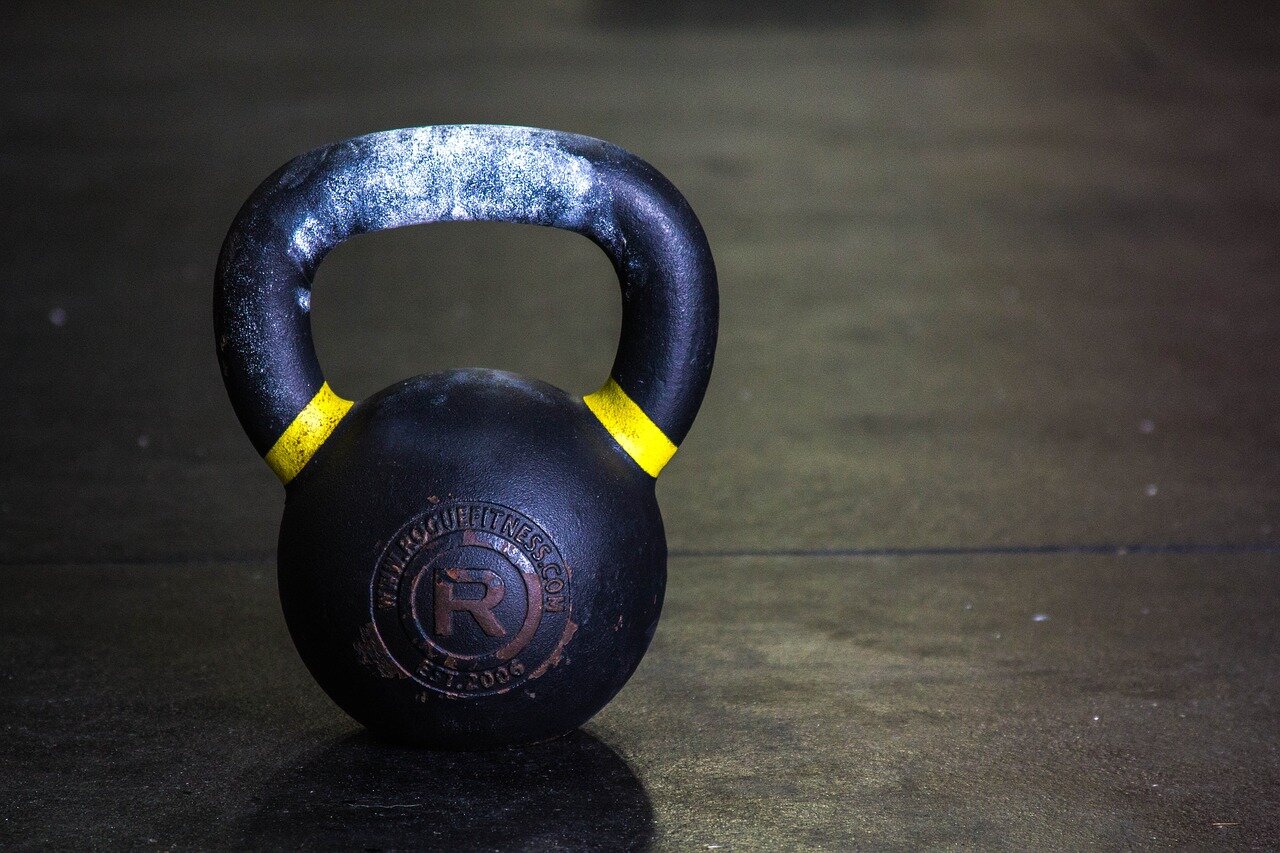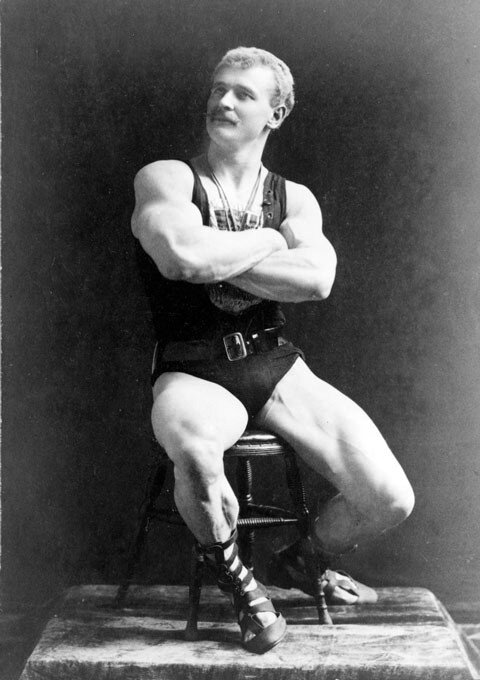Kettlebells Are Overrated
Takeaway Points:
The kettlebell is a type of weight which can be used for training, originating in Russia. Recently, kettlebells have exploded in popularity in the US and elsewhere around the world.
For many purposes, kettlebells can be used interchangeably with dumbbells, however, they present some unique strengths and weaknesses in comparison.
I feel that kettlebell training is currently overhyped, and it needs to be remembered that the kettlebell is just another tool in the toolkit - the needs of the individual may often dictate that it’s not the best tool in the situation.
Kettlebells are overrated. There, I said it.
For those who don’t know, a brief history of the kettlebell:
The kettlebell originates in Russia. These cannonball-like balls of metal are designed with a flat bottom (so that they don’t roll around) and a handle on top (so they can be easily carried around), and were traditionally used as weights to weigh and measure trade goods. Traditionally, they were weighted in pood, a Russian weight measurement that corresponds to roughly 36 pounds. For this reason, even to this day many kettlebells are sold in pood- and half-pood-approximate numbers instead of the traditional 5lb/2kg increments seen in most dumbbells.
However, strongmen and other physical culture enthusiasts began to lift and swing these weights as a way of displaying strength and athleticism. This even goes pretty far back, historically.
Bodybuilding pioneer Eugen Sandow is known primarily for his classically ripped physique. However, he was also a general physical fitness enthusiast, and promoted the first examples of “physical culture”. He discovered kettlebells in the late 1800’s and tried to bring them to the west, although they didn’t really catch on.
The rise of the Soviet Union and the fall of the iron curtain meant that kettlebells were for a long time forgotten. In the meantime, kettlebells grew in popularity as a training tool, and in the 1960’s became an official sport in Russia.
Kettlebell sport involves performing as many repetitions as possible in a given time with a given weight, so it remains unique as a strength-endurance sport (the only sport with similar qualities that comes to mind is CrossFit). The primary lifts used are single-handed variations of the Olympic lifts (snatch, clean and jerk), and the format of the competition is “complete as many reps as possible in 10 minutes without setting the weight down”.
With the fall of the Soviet Union and the opening of borders, it wasn’t long before kettlebells returned to the west. Pavel Tsatsouline, a Russian coach, wrote about kettlebells for the western audience in 1998, and as a result there was an explosion of interest. Kettlebells were at first a niche tool, but they quickly came to be found in many standard gyms.
Today, they can be found virtually everywhere. I see kettlebell classes, instructors who brag about being able to train their clients in kettlebell lifts, and even entire gyms dedicated to nothing but kettlebell training. The kettlebell’s construction is unique compared to other forms of weight in that the base of the weight is located further away than when working with other weights like dumbbells, so they’re especially useful for some exercises.
Here’s why I’m not impressed.
At the end of the day, the kettlebell is a tool, just like any other. It is useful in certain ways, and not particularly useful in other ways.
The kettlebell does allow the unique performance of a few lifts. In particular, the kettlebell swing, the clean and jerk, the snatch, and the Turkish get-up are all lifts that kettlebells can do uniquely well, and that other tools cannot do in the same way.
However, the clean and jerk and the snatch are complicated, form-wise, and aren’t useful for many general exercisers due to the high skill required. Training to learn and use these lifts effectively, while useful for athletes and serious exercisers, may be a waste of time when you can get similar health benefits from other lifts and when there’s no need to learn those particular lifts.
For the general exerciser, this leaves little except the kettlebell swing and the Turkish get-up. The swing is still a very useful lift and which I recommend to many clients - but buying an entirely new set of weights just for a single lift seems unnecessary. (To be fair, there are relatively cheap “kettlebell handles” which can be used to convert your existing DB’s into KB’s, but these can be awkward to work with in their own right.)
The get-up is a useful exercise for developing mobility and stability in the shoulders, but for those without shoulder limitations, it won’t provide too much additional benefit. The get-up can also be done just about as effectively with other weights, including dumbbells and sandbags - the main advantage of the kettlebell here is simply a slightly greater amount of control over the weight. Since this isn’t really a lift for developing muscle or strength, it’s only going to have limited applicability.
For some sports, training with kettlebells is an absolute necessity. If you’re looking to be good at CrossFit, or want to train for kettlebell sport directly, then you’ll need to get used to the kettlebell lifts. But at the same time, not everyone is training for CrossFit, and kettlebell sport is still very rare in the west - so you’re probably not that person.
What’s left is a lot of lifts that can be done with kettlebells, but which don’t need to be done with kettlebells, and don’t necessarily benefit from their use. In short, why bother?
Kettlebell rows, overhead presses, bench presses, squats, and deadlifts can all be done with kettlebell variations. However, in some cases, the long nature of the handle means that you have a reduced range of motion, leading to less gains in muscle and strength. If trying to use a kettlebell to perform bicep curls, for example, you’d have an awkward time of it. In many cases, the dumbbell or barbell would be a better choice to train these movements.
What’s left is a lot of popularity for kettlebells that I think is sometimes undeserved. As a general training tool, the kettlebell is sometimes underwhelming. It would definitely work well if it was all you had, but it gets outshone in my opinion by the more widely useful barbells and dumbbells.
So, while the kettlebell is an adequate tool in its own right, I recommend against blindly using it without considering its relative strengths and weaknesses. Every goal can be achieved in a variety of ways, and finding the right tool for the job may vary depending on your own situation and the equipment you have available.
About Adam Fisher
Adam is an experienced fitness coach and blogger who's been blogging for 5+ years, coaching for 6+ years, and lifting for 12+ years. He's written for numerous major health publications, including Personal Trainer Development Center, T-Nation, Bodybuilding.com, Fitocracy, and Juggernaut Training Systems.
During that time he has coached hundreds of individuals of all levels of fitness, including competitive powerlifters and older exercisers regaining the strength to walk up a flight of stairs. His own training revolves around powerlifting and bodybuilding.
Adam writes about fitness, health, science, philosophy, personal finance, self-improvement, productivity, the good life, and everything else that interests him. When he's not writing or lifting, he's usually hanging out with his cat or feeding his video game addiction.
Follow Adam on Facebook or Twitter, or subscribe to our mailing list, if you liked this post and want to say hello!
Enjoy this post? Share the gains!
Ready to be your best self? Check out the Better book series, or download the sample chapters by signing up for our mailing list. Signing up for the mailing list also gets you two free exercise programs: GAINS, a well-rounded program for beginners, and Deadlift Every Day, an elite program for maximizing your strength with high frequency deadlifting.
Interested in coaching to maximize your results? Inquire here.
Some of the links in this post may be affiliate links. For more info, check out my affiliate disclosure.




